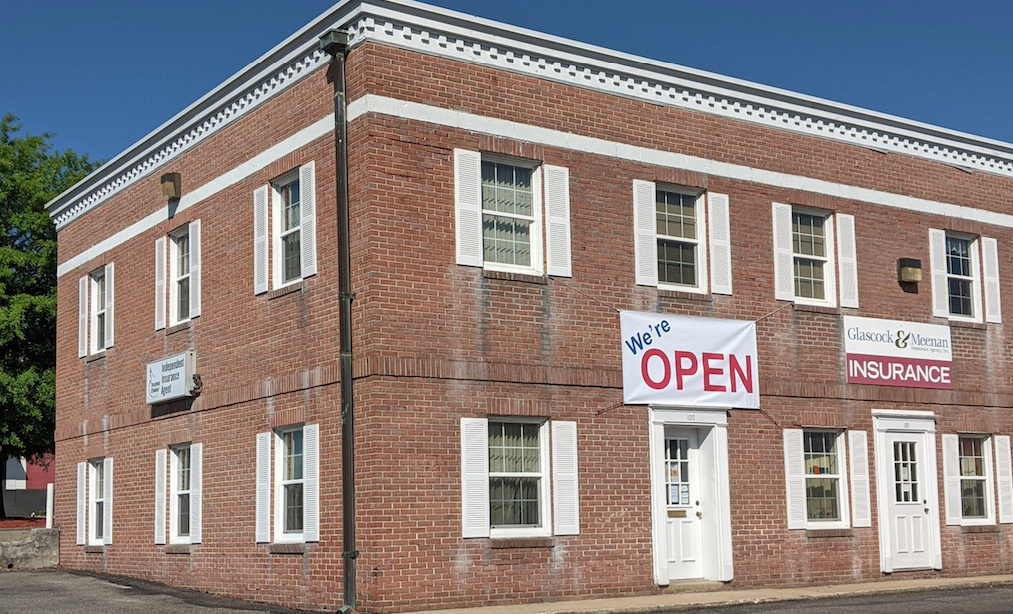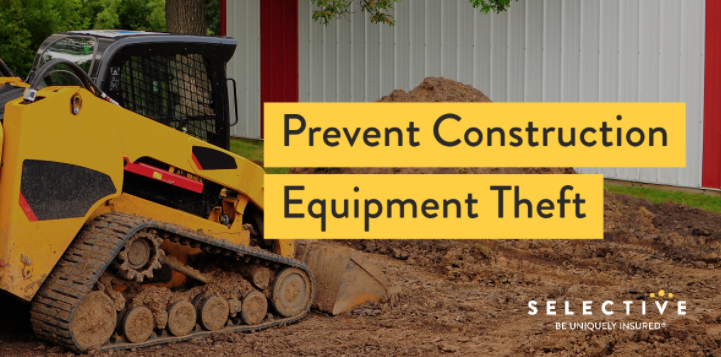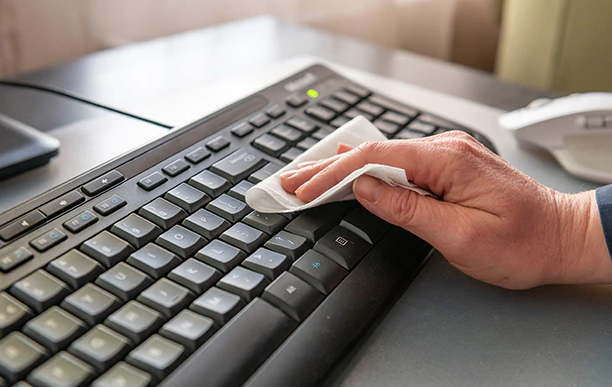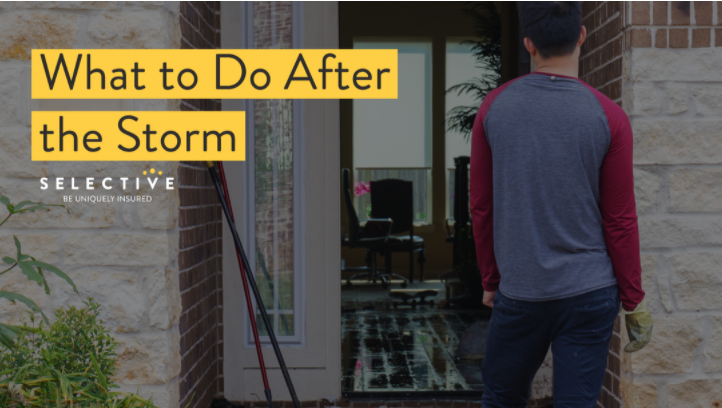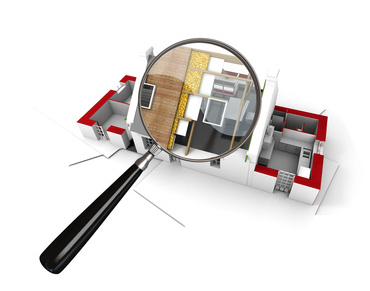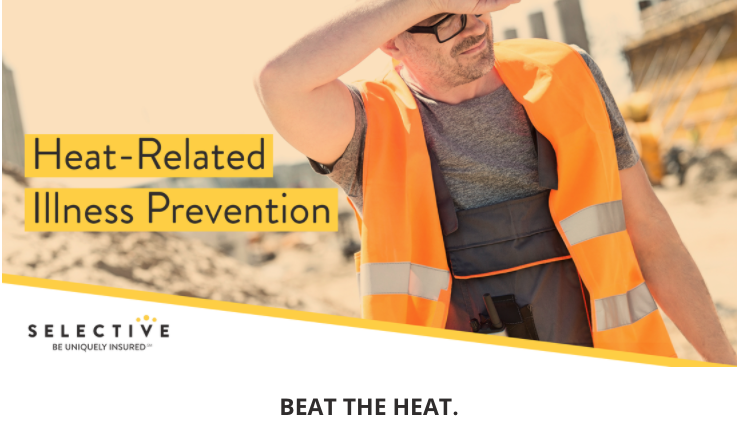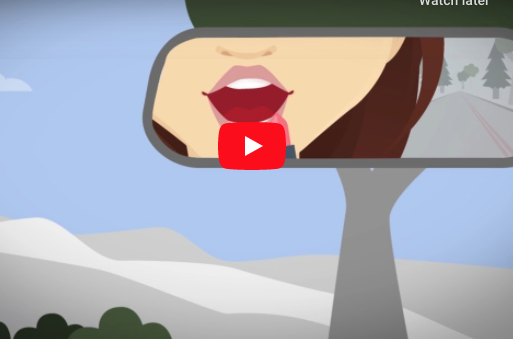Heat Illness Prevention
BEAT THE HEAT.
1. Monitor Water Intake. Consume 2 cups of water in the 30 minutes leading up to physical activity and 1 cup every 20 minutes during.2. Be Extra Careful at Work. Excessive heat was one of the top three most dangerous weather types in 2018, responsible for 162 deaths. It’s important that employees remember to not push themselves on exceedingly hot days.
3. Wear the Right Clothing. Wear lightweight, light-colored clothing, and regularly apply sunscreen.
While prevention is key, recognizing the symptoms of heat exhaustion quickly and treating them promptly is the next important step to combating heat-related illness. These symptoms include faintness, dizziness, fatigue, muscle cramps, cool skin amid hot air, and headaches.
If you suspect someone may be experiencing heat stroke, contact emergency medical help immediately. While awaiting professional help, the Mayo Clinic advises cooling the person by removing unnecessary clothing, moving the person indoors or to a shaded area, and applying water or cool compresses. Read More
PREVENT THE SPREADING OF CORONAVIRUS
Travel restrictions and bans are in effect across the globe, with a strong advisory to cancel non-essential travel. To review full travel restriction and travel ban information, please visit the CDC Travel Site. The following preventative measures can be taken to help prevent the spread of COVID-19 and other communicable diseases:
WASH HANDS OFTEN WITH SOAP AND WATER FOR AT LEAST 20 SECONDS
AVOID TOUCHING YOUR EYES, NOSE, AND MOUTH WITH UNWASHED HANDS
CLEAN AND DISINFECT FREQUENTLY TOUCHED OBJECTS AND SURFACES
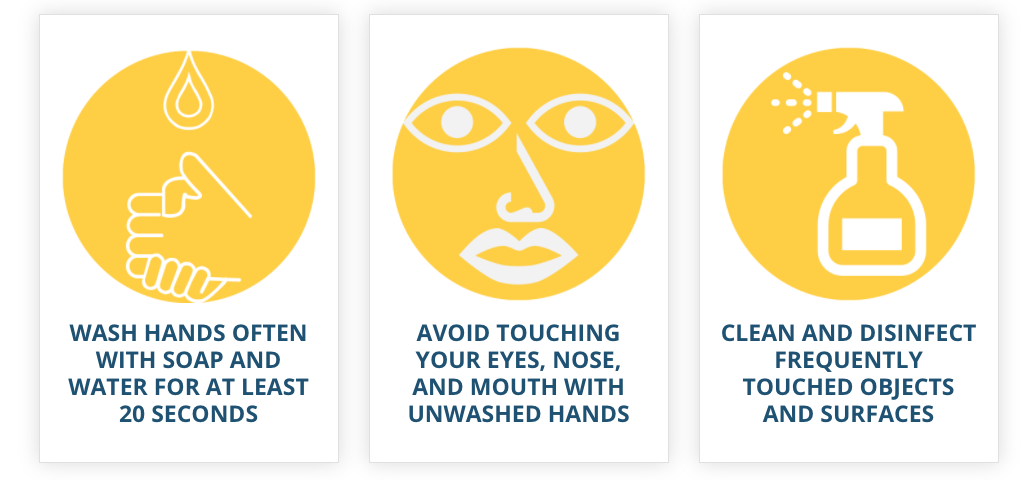
According to CDC guidelines, “if you think you have been exposed to COVID-19 and develop a fever and symptoms of respiratory illness, such as cough or difficulty breathing, call your healthcare provider immediately.” For further guidelines, please visit the CDC website. Read More
COVID-19: Financial Resources for Small Businesses
A number of new measures are designed to provide financial relief to small businesses and their employees affected by COVID-19. As a company committed to helping small businesses thrive, Travelers is sharing a list of financial programs designed to help small businesses.
The CARES Act
The Coronavirus Aid, Relief, and Economic Security (CARES) Act contains $376 billion in relief for U.S. workers and small businesses with several new temporary programs to address the COVID-19 outbreak, including economic injury disaster loans and bridge loans.
Paycheck Protection Program
What is it?
The Paycheck Protection Program is a forgivable loan from the Small Business Administration (SBA) designed to create a direct incentive for small businesses to keep their employees on the payroll.
- Eligible businesses may obtain financing of up to $10 million as determined by average payroll amounts in the previous eight weeks preceding the application date.
- Money can be used for payroll, rent, mortgage interest, or utilities. At least 75% of the forgiven amount must have been used for payroll.
- Loan repayments are deferred for six months.
- If you keep your workforce intact, the amount that covers the eight-week payroll period will be forgiven.
- Neither the government nor lenders will charge small businesses any fees.
- The loan has a maturity of 2 years and an interest rate of 0.5%.
Who is Eligible?
According to the SBA, the following entities affected by Coronavirus (COVID-19) may be eligible: Read more
Hailstorms are more common than the average person might think
Hailstorms are more common than the average person might think. In fact, almost 9 million claims for hail losses occurred within 14 years in the United States, costing more than $54 billion.
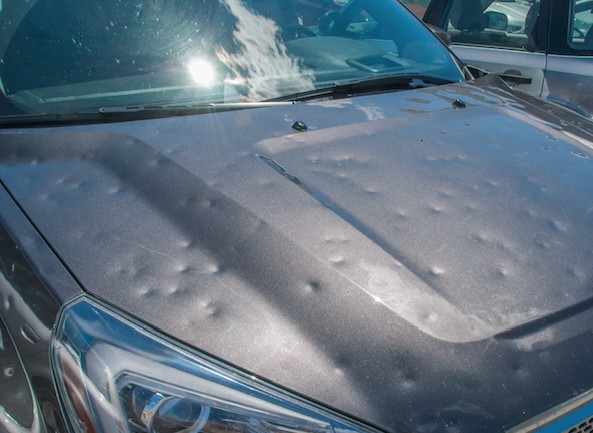
Hail is a unique form of precipitation from the atmosphere. When it occurs, its violent impact with the earth’s surface is alarming. This is so because when water freezes in the upper regions of thunderstorm clouds, it transforms drops into hailstones. These round or jagged frozen beads of water can cause serious damage to your property.
You may not be able to prevent hail, but you can do your part to prepare for it. Here are some ways you can prepare for a hailstorm in order to mitigate damages:
Install the Proper Roofing Materials
Whether a home or business, roofs are the most vulnerable parts of a building when it comes to hail. Having the necessary materials for your roof is key to minimize hail damage. When you are repairing or replacing your home’s roof, have a qualified roofer install materials that have been tested for impact resistance.
Materials that fall into these categories consist of:
- Asphalt Shingles – lightweight, cost-efficient and simple installation
- Metal – long life and lightweight
- Slate – strong and will last the longest
- Tile – heavyweight and solid, yet can be insecure without sealed material beneath it
Hail can cause two kinds of roof damages, functional or cosmetic. Functional damage is if the actual performance of the roof is affected, in which case, it should be remedied as soon as possible. Cosmetic damage is if the appearance is impacted, yet the roof still functions effectively. Read More
Stop Distracted Driving: Grooming
Putting on makeup and other grooming while driving can take our eyes off the road for longer than we think. You can stand up to distracted driving. Share this video and help stop distracted driving now.
Stop Distracted Driving
Texting and driving can be distracting, even if you think you’re only taking your eyes off the road for a second. You can stand up to distracted driving. Speak up.
How Crumple Zones Work

This may be a hard concept to accept but, despite what your intuition tells you, you may want a car that crumples. In fact, statistics show that the risk of being killed in a personal motor vehicle on U.S. roads has decreased each year, with the exception of 2012, when fatality and injury rates increased slightly.1 And much of that progress in car safety can be attributed to car design that has evolved from the invention of the crumple zone.2
The Crumple Zone – How Physics Saves Lives
Early designs of car bodies were designed to be rigid without much regard for what happened to the car and its occupants in a crash. The laws of physics dictate that if you are driving at 50 mph, and a crash causes the car to stop immediately, passengers will continue moving at 50 mph. The results can be fatal.
In a crash, crumple zones help transfer some of the car’s kinetic energy into controlled deformation, or crumpling, at impact. This may create more vehicle damage, but the severity of personal injury likely will be reduced. Crumpling allows the vehicle to take a little longer before coming to a stop, in effect lowering the average impact force, and increasing the survival space for the belted passengers. An engineered crumple zone works best in conjunction with a rigid occupant compartment, also known as a safety cage, to minimize potential injuries. Read More
Staying Safe in Work Zone Traffic
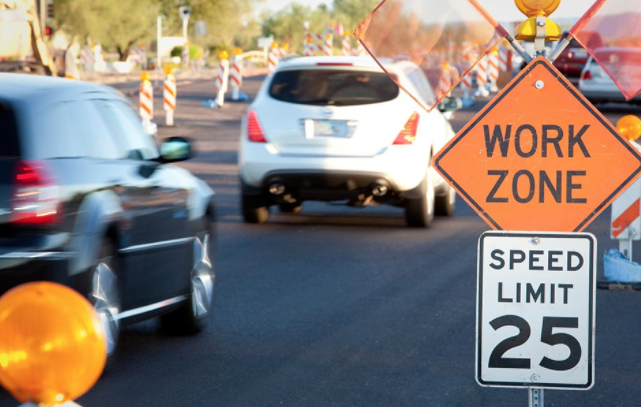
Roadwork can be frustrating, but it is a necessary fact of life for all drivers, whether you drive for a living, commute on a regular basis or run the occasional errand.
Delays and frustrations brought on by traffic jams caused by roadwork can make even the calmest person impatient. And that can be dangerous in a work zone: In 2014, auto accidents in work zones resulted in 669 fatalities and about 30,500 injuries.1
Driving in work zones does not have to be a stressful experience, though. Being mindful of those around you—both workers and other vehicles—can increase the safety of everyone on the road.
If your driving route includes work zones, here are a few things to keep in mind to help promote maximum safety and minimum stress. When entering a work zone:
- Be prepared for the unexpected: Situations can change quickly in work zones. Traffic could slow or stop unexpectedly, traffic lanes can merge, or equipment and workers can enter the roadway. Be aware and be prepared.
- Slow down: More than one-third of fatal accidents in work zones are caused by speeding.1 Obey the posted speed limit, even if you do not see any work currently in progress.
- Obey road crew flaggers and road signs: Flaggers and warning signs are there to help all drivers move safely through the work zone.
- Keep a safe following distance: Rear-end collisions account for 30% of work zone accidents.1 Keep a safe distance between you and other cars, construction workers and equipment to help avoid accidents. Read more
The Science of Traffic Patterns

Some traffic scenarios seem to defy logic, such as how roundabouts can actually be more efficient than traditional intersections, and how waiting to merge at a lane closure can be safer than merging sooner. There’s a science behind traffic patterns and why certain road conditions reliably create congestion and delays. Knowing what to expect can help you anticipate and avoid potentially dangerous traffic patterns. Here are three seemingly paradoxical traffic patterns and the science behind them.
The Rubbernecking Redux
You’re on the highway with your radio tuned to a traffic report. An accident up ahead is tying up traffic in eastbound lanes, but fortunately you’re headed west. Then traffic slows in front of you, and you slowly travel along until you pass the accident scene on the opposite side of the road, the traffic in front of you clears, and you’re on your way. The slowdown in traffic is due to the human instinct to look over to see the accident scene, and that has the potential to make the situation worse.
That’s because sudden fluctuations in speed, like a tap on the brakes for a quick peek at an accident scene, create uncertainty for drivers, and force everyone to go more slowly, according to Chris Hayes, a transportation safety professional with Travelers Risk Control.
If you’ve ever seen a line of cars in traffic start to slam on their brakes all at once, and then couldn’t figure out what everyone was braking for, you were probably part of a traffic pulse. A “traffic pulse” occurs when a vehicle brakes, which in turn causes the vehicle behind it to brake, continuing back down the roadway as long as there is dense traffic. A pulse can go for miles in particularly heavy traffic as vehicles brake and tighten up following distance, then accelerate into faster speeds.
Traffic pulses also increase the potential for distracted drivers to rear-end the cars in front of them, causing more accidents. If there’s a major accident up ahead, even in the opposite direction, it may make sense to avoid the area entirely if you can. Read More

